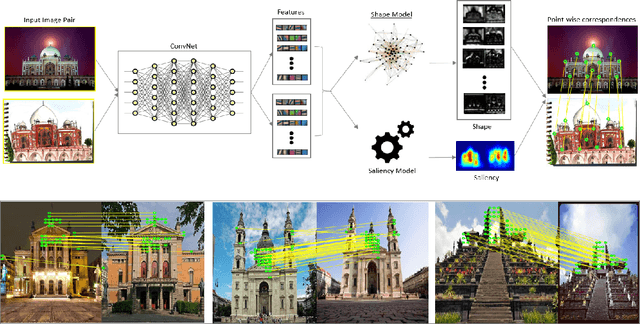Deep Spectral Correspondence for Matching Disparate Image Pairs
Paper and Code
Sep 12, 2018



A novel, non-learning-based, saliency-aware, shape-cognizant correspondence determination technique is proposed for matching image pairs that are significantly disparate in nature. Images in the real world often exhibit high degrees of variation in scale, orientation, viewpoint, illumination and affine projection parameters, and are often accompanied by the presence of textureless regions and complete or partial occlusion of scene objects. The above conditions confound most correspondence determination techniques by rendering impractical the use of global contour-based descriptors or local pixel-level features for establishing correspondence. The proposed deep spectral correspondence (DSC) determination scheme harnesses the representational power of local feature descriptors to derive a complex high-level global shape representation for matching disparate images. The proposed scheme reasons about correspondence between disparate images using high-level global shape cues derived from low-level local feature descriptors. Consequently, the proposed scheme enjoys the best of both worlds, i.e., a high degree of invariance to affine parameters such as scale, orientation, viewpoint, illumination afforded by the global shape cues and robustness to occlusion provided by the low-level feature descriptors. While the shape-based component within the proposed scheme infers what to look for, an additional saliency-based component dictates where to look at thereby tackling the noisy correspondences arising from the presence of textureless regions and complex backgrounds. In the proposed scheme, a joint image graph is constructed using distances computed between interest points in the appearance (i.e., image) space. Eigenspectral decomposition of the joint image graph allows for reasoning about shape similarity to be performed jointly, in the appearance space and eigenspace.
 Add to Chrome
Add to Chrome Add to Firefox
Add to Firefox Add to Edge
Add to Edge